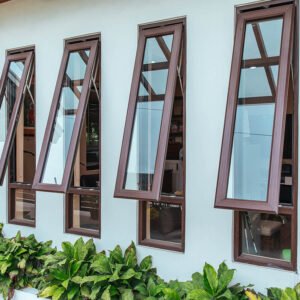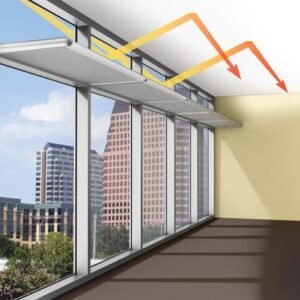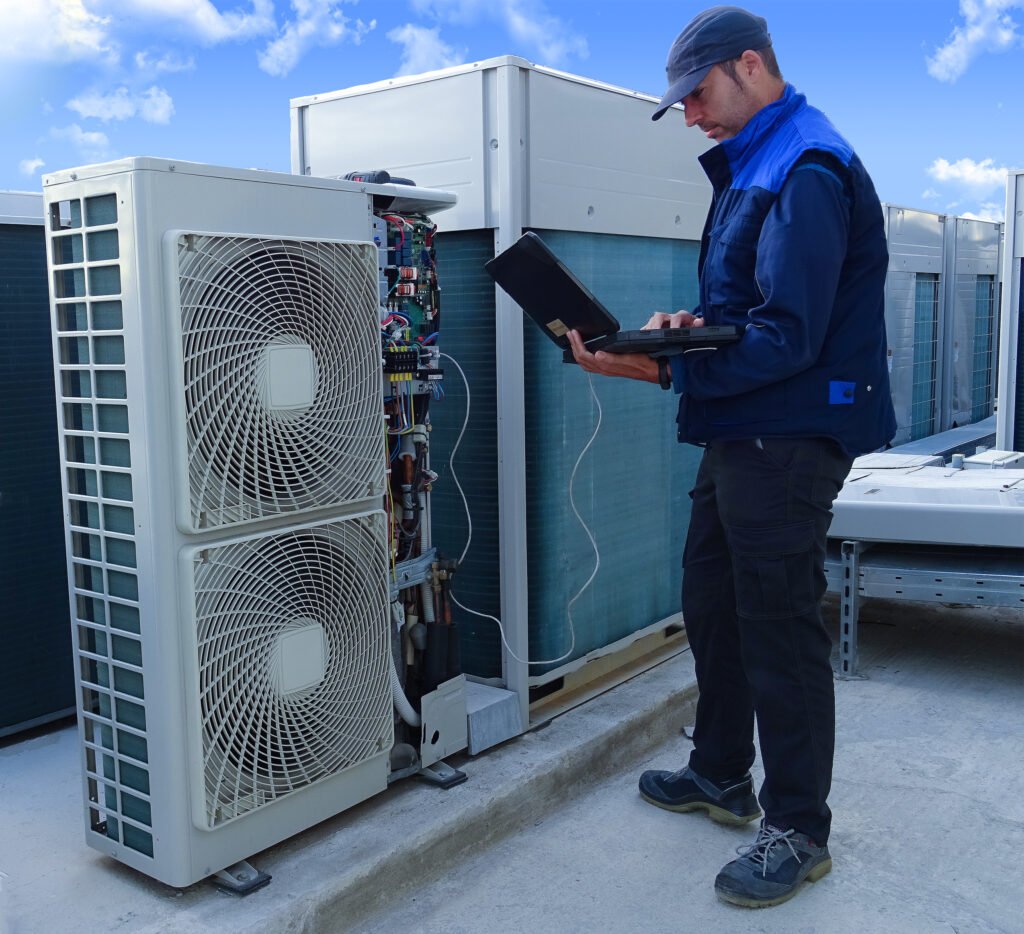Green buildings prioritize sustainability and occupant health, and HVAC systems play a major role in achieving these goals.
Here’s a breakdown of key considerations for HVAC design and operation in green buildings:
1. Building Design for Passive Heating and Cooling:
- Orientation and Shape: Compact buildings with south-facing windows maximize natural light and warmth in colder climates. In hotter climates, minimize east and west sun exposure.
- Shading: Strategically placed overhangs, awnings, trees, or blinds block unwanted sunlight during peak heating periods.

- Landscaping: Use landscaping to block cold winds in winter or channel cool summer breezes.
- Daylighting: Skylights, light shelves, and well-positioned windows provide natural light, reducing reliance on artificial lighting.

Daylighting
2. Energy-Efficient HVAC Systems:
- Equipment Selection: Choose high-efficiency systems with features like variable-speed drives (adjust fan speed for optimal airflow) and ENERGY STAR certification.
- Demand-Controlled Ventilation (DCV): DCV systems adjust ventilation based on occupancy and CO2 levels, minimizing unnecessary fresh air intake.
- Heat Recovery Ventilation (HRV): (Cold Climates) HRV captures heat from exhaust air and transfers it to incoming fresh air, reducing heating loads.
- Ground-Source Heat Pumps: These systems leverage the constant temperature of the earth for efficient heating and cooling.
3. Smart System Operation and Maintenance:
- Programmable Thermostats: Utilize smart thermostats to automatically adjust temperature settings based on occupancy and time of day.
- Building Automation Systems (BAS): Integrate BAS for centralized control and monitoring of HVAC systems, optimizing performance and identifying potential issues.
- Preventative Maintenance: Regularly schedule maintenance to ensure optimal equipment performance, prevent breakdowns, and maintain efficiency.
4. Additional Considerations:
- Air Sealing: Address air leaks in the building envelope to prevent conditioned air from escaping and reducing efficiency.
- Occupant Comfort: Encourage occupants to dress appropriately for the season and utilize ceiling fans for personal comfort, reducing reliance on HVAC systems.
By implementing these strategies, you can design and operate an HVAC system that minimizes energy consumption, promotes occupant health with good air quality, and contributes to a sustainable green building.
Looking to install a commercial HVAC System or Duct work in your Business Area?
Contact Vipul Ac to learn about our HVAC Service
Call +91 8000092000 Today.


